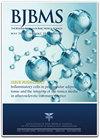LKB1抑制通过LKB1-AMPK-YAP轴促进心肌细胞再生
IF 3.4
4区 医学
Q2 MEDICINE, RESEARCH & EXPERIMENTAL
引用次数: 20
摘要
成年哺乳动物心肌细胞的再生潜力有限。以往的研究报道,心肌细胞增殖受到amp活化蛋白激酶(AMPK)的抑制。肝激酶B1 (LKB1)作为AMPK的主要上游激酶,在心肌细胞增殖中的作用尚不清楚。在这项研究中,我们发现LKB1水平在出生后迅速升高。通过功能丧失和功能获得研究,我们的数据表明LKB1水平与心肌细胞增殖负相关。接下来,我们利用高通量RNA测序技术确定了yes相关蛋白(YAP)是LKB1的下游效应蛋白。我们的研究结果还表明AMPK在Lkb1敲低诱导的心肌细胞增殖中起重要作用。重要的是,失活的AMPK取消了lkb1介导的YAP核易位和心肌细胞增殖的调节。因此,我们的研究结果提示LKB1-AMPK-YAP轴在心肌细胞增殖中的作用,可以作为诱导损伤后心脏再生的潜在靶点。本文章由计算机程序翻译,如有差异,请以英文原文为准。
LKB1 suppression promotes cardiomyocyte regeneration via LKB1-AMPK-YAP axis
The regenerative potential of cardiomyocytes in adult mammals is limited. The previous studies reported that cardiomyocyte proliferation is suppressed by AMP-activated protein kinase (AMPK). The role of liver kinase B1 (LKB1), as the major upstream kinase for AMPK, on cardiomyocyte proliferation is unclear. In this study, we found that the LKB1 levels rapidly increased after birth. With loss- and gain-of-function study, our data demonstrated that LKB1 levels negatively correlate with cardiomyocyte proliferation. We next identified Yes-associated protein (YAP) as the downstream effector of LKB1 using high-throughput RNA sequencing. Our results also demonstrated that AMPK plays an essential role in Lkb1 knockdown-induced cardiomyocyte proliferation. Importantly, deactivated AMPK abolished the LKB1-mediated regulation of YAP nuclear translocation and cardiomyocyte proliferation. Thus, our findings suggested the role of LKB1-AMPK-YAP axis during cardiomyocyte proliferation, which could be used as a potential target for inducing cardiac regeneration after injury.
求助全文
通过发布文献求助,成功后即可免费获取论文全文。
去求助
来源期刊

Bosnian journal of basic medical sciences
医学-医学:研究与实验
CiteScore
7.40
自引率
5.90%
发文量
98
审稿时长
35 days
期刊介绍:
The Bosnian Journal of Basic Medical Sciences (BJBMS) is an international, English-language, peer reviewed journal, publishing original articles from different disciplines of basic medical sciences. BJBMS welcomes original research and comprehensive reviews as well as short research communications in the field of biochemistry, genetics, immunology, microbiology, pathology, pharmacology, pharmaceutical sciences and physiology.
 求助内容:
求助内容: 应助结果提醒方式:
应助结果提醒方式:


